Abstract
Atherosclerotic plaques in man have monoclonal characteristics. One possible explanation for this observation is that clonal selection occurs as cells proliferate at sites of intimal injury. To test whether such clonal selection could occur during the formation of an intimal "scar", the clonal characteristics of human cutaneous scars were studied with the use of glucose-6-phosphate dehydrogenase (G-6-PD) as a cellular marker. Scars from 7 black women heterozygous for the A and B isoenzymes of G-6-PD were divided into 870 portions consisting of contiguous normal skin, scar margin, outer scar, and inner scar. Portions were further divided into surface and deeper portions of scar. In 4 of the 7 cases, significant differences were observed between the mean percentage of total activity in the B isoenzyme band in portions of scar and portions of skin. Significant differences between surface and deeper portions of both skin and scar were also observed in 5 cases. The variance of isoenzyme values from portions of scars was not significantly greater than that within portions of skin. It is concluded that the results are consistent with clonal selection occurring during the healing of skin wounds. However, the magnitude of the difference (no greater than a 5.7% B isoenzyme difference) is far too small to even partially explain the marked differences in isoenzyme patterns observed between atherosclerotic plaques and uninvolved aortic wall. The results do not support the idea that the monoclonality of human atherosclerotic plaques is due to clonal selection following the healing of an intimal injury.
Full text
PDF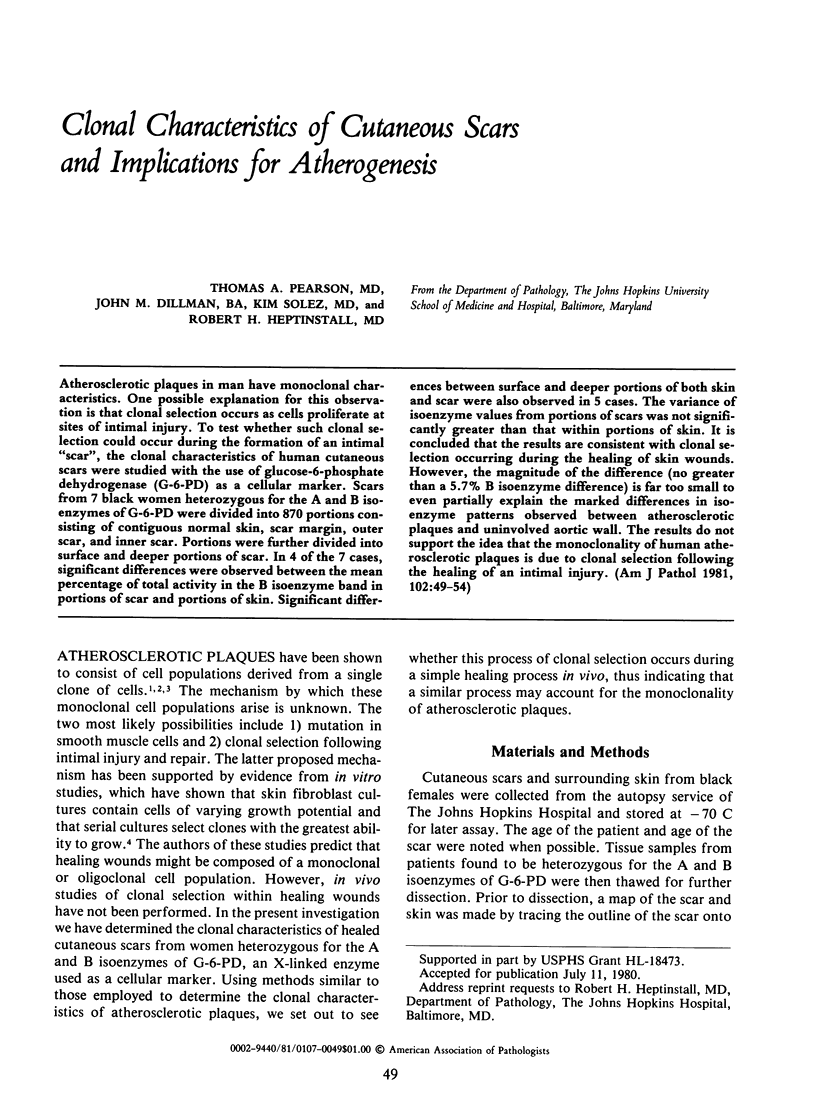
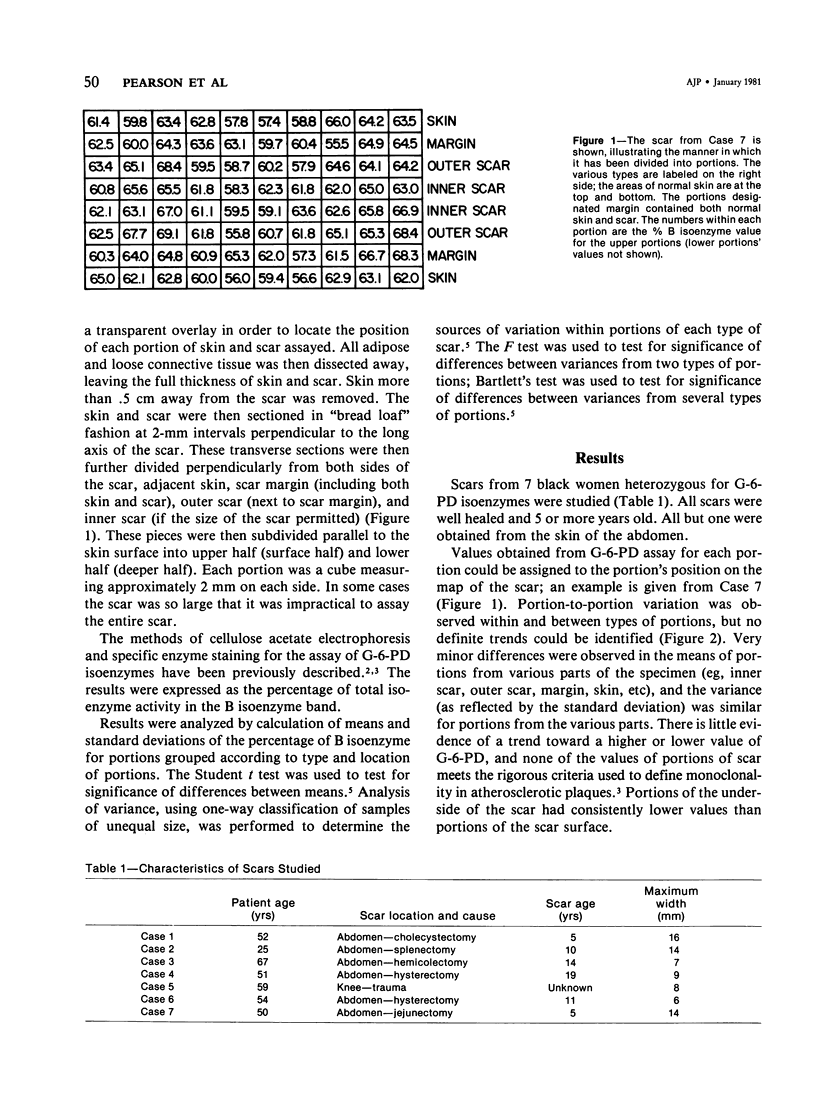
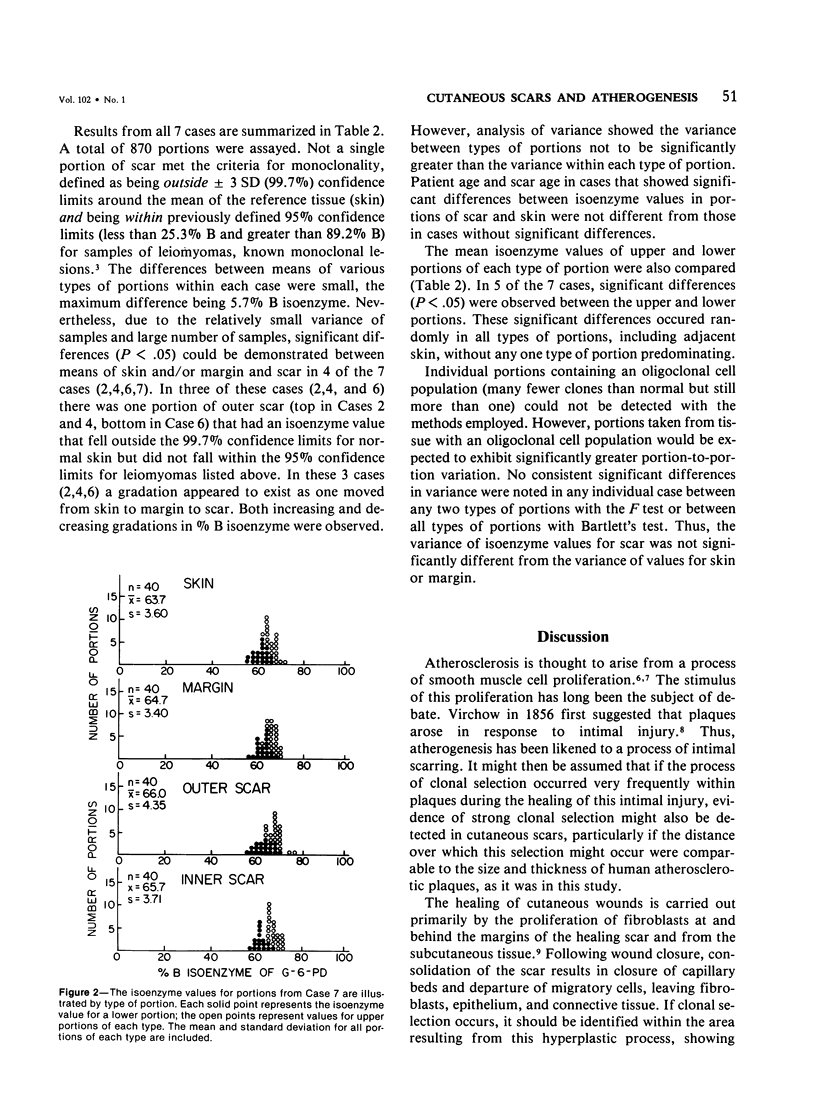
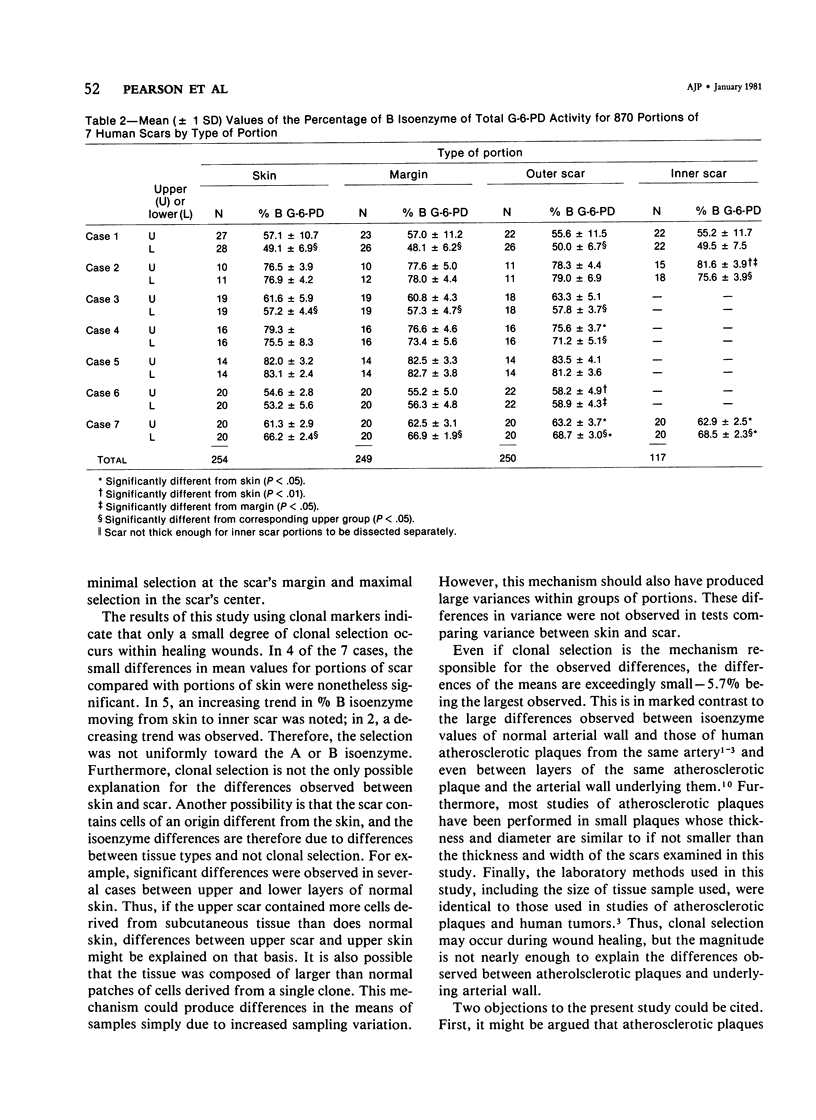
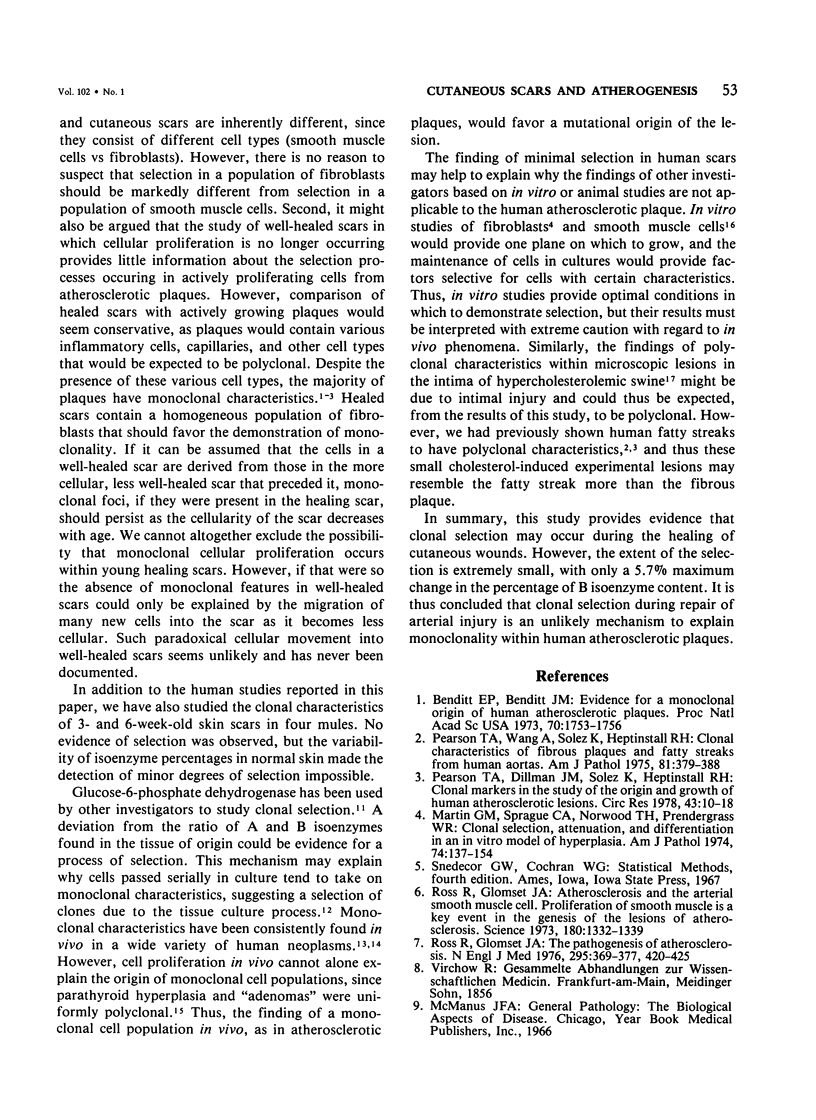
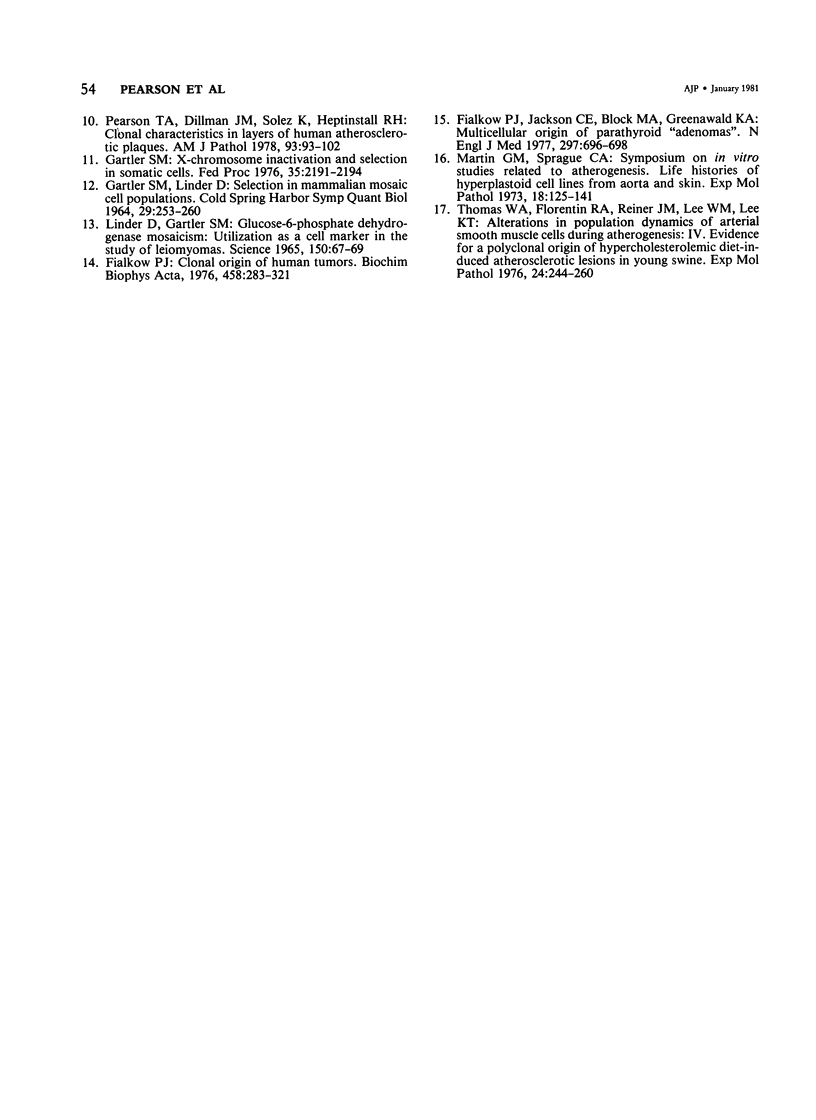
Selected References
These references are in PubMed. This may not be the complete list of references from this article.
- Benditt E. P., Benditt J. M. Evidence for a monoclonal origin of human atherosclerotic plaques. Proc Natl Acad Sci U S A. 1973 Jun;70(6):1753–1756. doi: 10.1073/pnas.70.6.1753. [DOI] [PMC free article] [PubMed] [Google Scholar]
- Fialkow P. J. Clonal origin of human tumors. Biochim Biophys Acta. 1976 Oct 12;458(3):283–321. doi: 10.1016/0304-419x(76)90003-2. [DOI] [PubMed] [Google Scholar]
- Fialkow P. J., Jackson C. E., Block M. A., Greenawald K. A. Multicellular origin of parathyroid "adenomas". N Engl J Med. 1977 Sep 29;297(13):696–698. doi: 10.1056/NEJM197709292971304. [DOI] [PubMed] [Google Scholar]
- GARTLER S. M., LINDER D. SELECTION IN MAMMALIAN MOSAIC CELL POPULATIONS. Cold Spring Harb Symp Quant Biol. 1964;29:253–260. doi: 10.1101/sqb.1964.029.01.028. [DOI] [PubMed] [Google Scholar]
- Gartler S. M. X-chromosome inactivation and selection in somatic cells. Fed Proc. 1976 Aug;35(10):2191–2194. [PubMed] [Google Scholar]
- Linder D., Gartler S. M. Glucose-6-phosphate dehydrogenase mosaicism: utilization as a cell marker in the study of leiomyomas. Science. 1965 Oct 1;150(3692):67–69. doi: 10.1126/science.150.3692.67. [DOI] [PubMed] [Google Scholar]
- Martin G. M., Sprague C. A., Norwood T. H., Pendergrass W. R. Clonal selection, attenuation and differentiation in an in vitro model of hyperplasia. Am J Pathol. 1974 Jan;74(1):137–154. [PMC free article] [PubMed] [Google Scholar]
- Martin G. M., Sprague C. A. Symposium on in vitro studies related to atherogenesis. Life histories of hyperplastoid cell lines from aorta and skin. Exp Mol Pathol. 1973 Apr;18(2):125–141. doi: 10.1016/0014-4800(73)90012-9. [DOI] [PubMed] [Google Scholar]
- Pearson T. A., Dillman J. M., Solex K., Heptinstall R. H. Clonal markers in the study of the origin and growth of human atherosclerotic lesions. Circ Res. 1978 Jul;43(1):10–18. doi: 10.1161/01.res.43.1.10. [DOI] [PubMed] [Google Scholar]
- Pearson T. A., Dillman J. M., Solez K., Heptinstall R. H. Clonal characteristics in layers of human atherosclerotic plaques. A study of the selection hypothesis of monoclonality. Am J Pathol. 1978 Oct;93(1):93–102. [PMC free article] [PubMed] [Google Scholar]
- Pearson T. A., Wang B. A., Solez K., Heptinstall R. H. Clonal characteristics of fibrous plaques and fatty streaks from human aortas. Am J Pathol. 1975 Nov;81(2):379–387. [PMC free article] [PubMed] [Google Scholar]
- Ross R., Glomset J. A. Atherosclerosis and the arterial smooth muscle cell: Proliferation of smooth muscle is a key event in the genesis of the lesions of atherosclerosis. Science. 1973 Jun 29;180(4093):1332–1339. doi: 10.1126/science.180.4093.1332. [DOI] [PubMed] [Google Scholar]
- Ross R., Glomset J. A. The pathogenesis of atherosclerosis (second of two parts). N Engl J Med. 1976 Aug 19;295(8):420–425. doi: 10.1056/NEJM197608192950805. [DOI] [PubMed] [Google Scholar]
- Thomas W. A., Florentin R. A., Reiner J. M., Lee W. M., Lee K. T. Alterations in population dynamics of arterial smooth muscle cells during atherogenesis. IV. Evidence for a polyclonal origin of hypercholesterolemic diet-induced atherosclerotic lesions in young swine. Exp Mol Pathol. 1976 Apr;24(2):244–260. doi: 10.1016/0014-4800(76)90009-5. [DOI] [PubMed] [Google Scholar]


